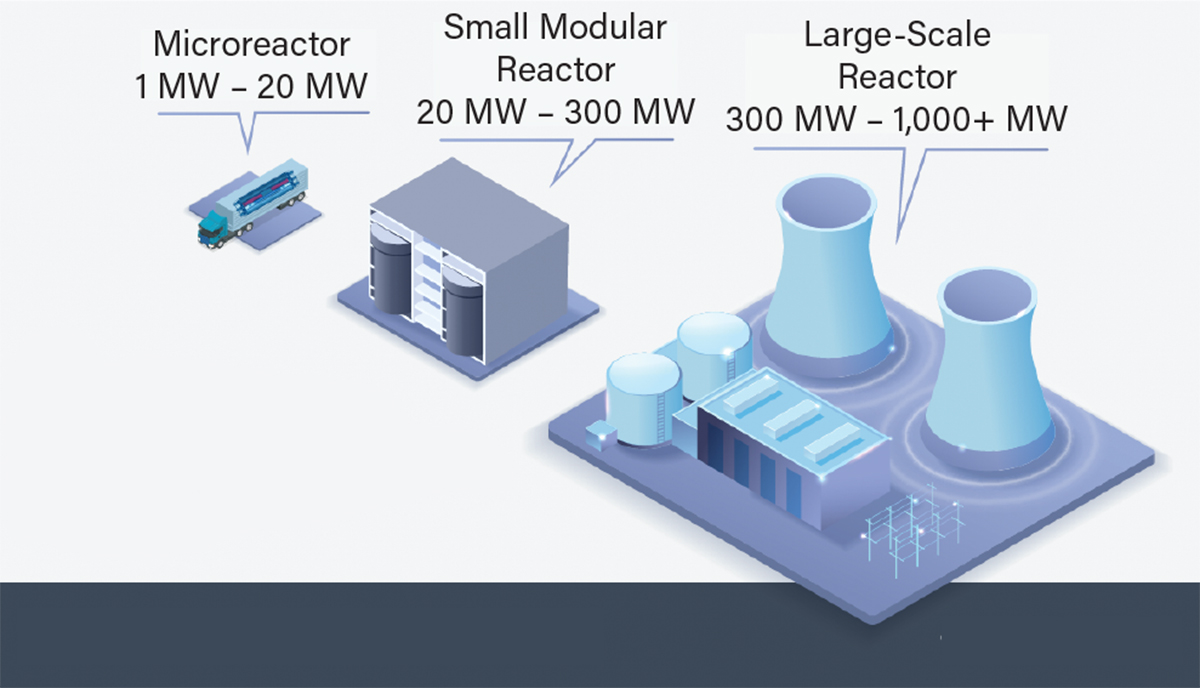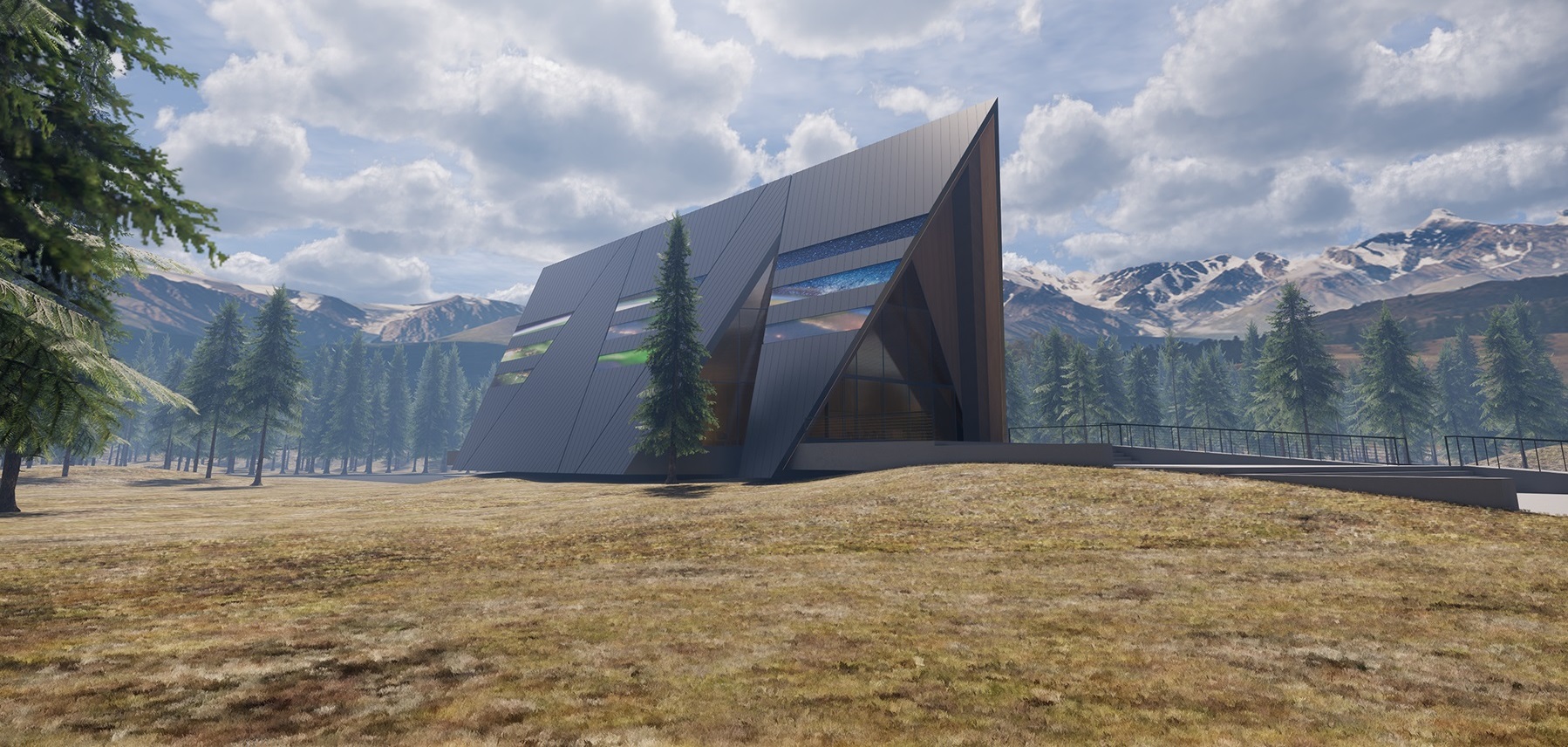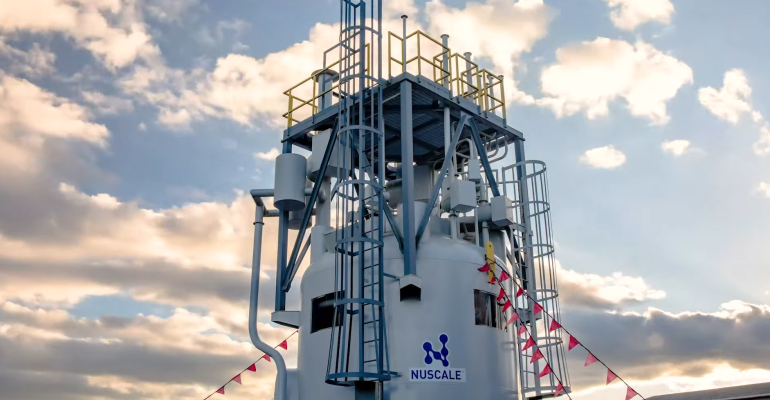Data center operators face two energy-related challenges in their quest to build greater data center capacity to meet demand: a shortage of available energy to power data centers and the need to reduce carbon emissions. But an emerging nuclear technology, small modular reactors (SMRs), could solve both issues at once.
Startups and established companies alike are racing to build small-scale nuclear reactors to power data centers and other industrial and consumer needs. They say these next-generation nuclear reactors are safe and, unlike fossil fuels, will not emit carbon or other atmospheric pollutants during the power generation process, which will assist data center operators with their key sustainability goals.
While SMR vendors plan to launch commercially available SMRs sometime in the late 2020s to the early 2030s, many hurdles remain – from perfecting the technology and gaining regulatory approval to developing viable business models. Nevertheless, data center analysts say SMRs hold promise.
“There is a well up of interest in nuclear as a potential solution for power-constrained markets that the data center industry has been challenged with,” said Alan Howard, an Omdia principal analyst who focuses on data centers and colocation services. “It’s really clean energy. To get to a net-zero economy, nuclear is going to have to play a big role.”
What Are Small Modular Reactors (SMRs)?
SMRs are advanced nuclear reactors with a power capacity of up to 300 megawatts electric (MWe), about one-third of the capacity of large, traditional nuclear power reactors, according to the International Atomic Energy Agency (IAEA). An even smaller type of SMR, called a microreactor, generates up to 20 MWe, according to the Idaho National Laboratory (INL).
As the name implies, SMRs are small and modular. These prefabricated units can be transported and installed on-site, and as a result, are more affordable and easier and faster to build than large reactors that often have custom designs, the IAEA said.
“It’s not just building one large reactor. You can put multiple units on one site to get to scale. Think of them like Lego blocks,” said Brian Gitt, head of business development at Oklo, a startup that’s building 15 MWe and 50 MWe SMRs.

Comparison between a conventional, small modular reactor, and microreactor in terms of their sizes and generated power.
SMRs In Use and In Development
Russia was the first to deploy SMRs in 2020 when it created a floating power plant called the Akademik Lomonosov, which features two 35 MWe SMRs in the port town of Pevek in Russia’s Far East.
In all, about 80 commercial SMR designs are being developed, according to the IAEA. Other SMRs are in the licensing stage or under construction in Argentina, Canada, China, South Korea, and the US, the organization said.
The US government is a big proponent of nuclear energy. Since 2014, the Department of Energy has provided more than $600 million to companies to support their SMR development efforts.
In fact, since 2016, the Energy Department’s Gateway for Accelerated Innovation in Nuclear (GAIN) has awarded $31.8 million in funding grants to 52 private companies, said Christopher Lohse, GAIN’s innovation and technology manager at INL.
The grants come in the form of vouchers that provide the small modular reactor companies access to resources and scientific expertise at the Energy Department’s national laboratories, including INL, Argonne, Oak Ridge, and Sandia, he said. The goal is to help private companies test and demonstrate the technology to accelerate commercialization.
“GAIN’s main role is to help nuclear energy developers access the unique assets and capabilities of the national laboratories,” Lohse said. “Labs are building test beds and supporting advanced reactor demonstration projects.”
In addition to Oklo, other US-based companies developing small modular reactors include BWX Technologies, Kairos Power, NuScale Power, and X-energy. In the UK, Rolls-Royce is also developing SMR technology.

An artist rendition of an Oklo small modular reactor facility.
Some recent SMR developments in 2023 include:
- The Nuclear Regulatory Commission (NRC) approved the first SMR design in the US: NuScale’s advanced ‘light-water’ SMR, which can generate 77 MWe. In October, hosting provider Standard Power announced plans to use NuScale’s SMRs to build two nuclear power plants in Ohio and Pennsylvania to provide nearly 2 GW of power to nearby data centers by 2029.
- In April, Green Energy Partners, a property and project development company, purchased 641 acres for a project that includes using four to six SMRs to power 20 to 30 data centers, generate hydrogen fuel and provide backup power for Virginia’s grid.
- US infrastructure management company Standard Power has unveiled plans to develop two small modular reactor-powered facilities in the US that will together power data centers in Ohio and Pennsylvania.
- The US Department of Defense, which is investing in the development of microreactors to power mission-critical operations in remote and austere environments, announced in June that it has selected BWX to build and test a microreactor prototype at INL.
- Microsoft in September listed a job posting for a nuclear technology expert to lead its efforts to use SMRs and microreactors to power the tech giant’s data centers.
Benefits of SMRs: Safer and Cleaner
Due to the lasting impact of the Chernobyl, Three Mile Island, and Fukushima nuclear disasters, the public may perceive nuclear power generation as a significant risk. However, SMRs have been re-engineered to be much safer, wrote Omdia’s Howard in a report. They pose far less risk because of their smaller size, simpler design and inherent safety characteristics, he wrote.
In contrast to traditional, large nuclear reactors, small modular reactors do not require human intervention or external power/force to be shut down, the IAEA said. SMRs are passive systems that can shut down on their own through physical phenomena, such as natural circulation, convection, gravity and self-pressurization, the organization said. If an accident occurs, SMR safety features eliminate or significantly lower the potential release of unsafe radioactive material into the environment, the IAEA stated.
“The problem that happened with Three Mile Island, Chernobyl, and Fukushima is the fuel heated up. They lost the ability to remove the heat, so they overheated, and the fuel melted down,” said Gitt of Oklo. “These [SMR] designs are self-cooling – without power, without human intervention or any kind of active mechanical system.”
SMRs also produce significantly less nuclear waste. While large, conventional nuclear power plants must be refueled every one to two years, SMRs are designed to be refueled every three to seven years. Some are even designed to operate for up to 40 years without refueling, according to the Omdia report.
Another benefit of SMRs is that they can be placed in more locations than traditional large nuclear plants. Nuclear plants powered by SMRs can overcome the issue of grid constraints because they can be installed closer to the consumers of energy and even on-site with data centers, Howard said.
“One of the constraints is the grid power transmission network. One of the benefits of SMRs is being able to put power generation closer to the source of need, on-site or within a reasonable distance,” Howard told Data Center Knowledge in an interview.
The key benefit for data center operators is that SMRs will generate reliable, carbon-free electricity, said Jay Dietrich, the Uptime Institute’s research director of sustainability.
Nuclear is a clean energy source that can augment the use of renewable energy, such as wind and solar power, to help data centers become more sustainable. The issue is renewable energy sources, such as wind and solar power generation, can be seasonal and intermittent, he said.
“There is a struggle to get carbon-free energy that’s reliable. Nuclear does two things for you: one is reliable power and the second is it’s carbon free, so you can meet your carbon-free and net zero objectives,” Dietrich said.
SMR Adoption Challenges
While SMRs offer many potential benefits to the data center industry, it will take time for the market to develop. It’s about a 10-year journey with many hurdles to clear, from getting manufacturing ramped up, receiving design permits and site approvals, and gaining permission to hook into the grid if they are not specifically built on-site with data centers, Dietrich said.
The cost to build the initial nuclear plants using SMRs may be high, but over time, the costs will go down, Lohse from INL said.
“I don’t think anyone expects the first couple of builds to be the cheapest, but when you get the supply chain going, the cost curve will go down and you will get economies of scale,” he said.
In fact, in a setback to the emerging market, NuScale’s plan to launch a six-reactor, 462 MW-project with Utah Associated Municipal Power Systems collapsed in early November when several towns withdrew from the project after costs rose.
Another challenge is that SMRs will still produce some nuclear waste, even if it’s much less than large, traditional nuclear plants, Lohse said. Some SMR companies are looking at using recycled nuclear waste to minimize waste, he added.
For example, Oklo, which plans to go live with a commercial reactor to power INL in 2027, plans to build a full-scale nuclear fuel recycling facility and use recycled nuclear fuel for its SMRs, Gitt said.
Another adoption challenge is getting community buy-in to build small nuclear reactors in both rural and urban locations. SMR vendors and developers could face some pushback, so they must be prepared to demonstrate that the nuclear technology is safe and offers economic benefits, analysts said.
“It’s a major communication effort and a lot of listening and work to address concerns positively,” Dietrich said.
How Will the SMR Market Develop In the Future?
The emerging SMR market has gained momentum in recent years. It’s a confluence of factors, from private companies making technological advances, increased government funding, and research support from national labs to the
NRC streamlining its process for approvals, Howard said.
At the policy level, federal, state, and local governments are paying more attention to the need for power generation, he said.
Dietrich from the Uptime Institute agrees, saying utilities, large data center operators, regulators, state legislatures, climate activists and others are realizing that the grid cannot remain viable without dispatchable, baseload carbon-free electricity generation. The only demonstrated technology available to fill that niche is nuclear, he said.
“You’ve seen a shift from, ‘there’s no way we should use nuclear,’ to a pretty strong voice that nuclear has to play a part,” Dietrich says. “With that realization, commercial and industrial customers view nuclear generation and SMRs as an important piece of the electrical energy infrastructure.”
The SMR market will develop step-by-step. First, there will be permitting efforts and demonstration projects. Then the first units will go in and begin operation, and as people get familiar with the technology, there will be more willingness by communities to support SMR adoption, Dietrich says.
SMR vendors can pursue different business models, Lohse said. They can sell SMRs to utilities, who in turn would own and operate the nuclear plants to provide power to data centers and other industries. They could also become their own power producer and sell the power to data centers themselves, he said.
“Do they want to pair it with other renewables and be grid connected, or simply colocate it next to data centers in one spot and be an island? It’s a blank canvas for these companies to figure out what business model they want,” Lohse said.
Data centers most likely will prefer a third-party to operate the SMR-powered plants rather than own and operate SMRs themselves, Lohse added.
Overall, nuclear power is part of the equation for data centers to become fully powered by carbon-free energy, but it will take time, Dietrich says.
However, now is the time for data center operators to take small nuclear reactors into account as they plan future data centers, Howard said.
“The time to start paying attention is now because large infrastructure projects, including data centers, typically have a fairly long planning cycle,” Howard said.
“It’s important that people in planning positions for data center developments understand where the SMR industry is at and look five, six or seven years down the road, so they understand where power is going to be and how that might affect their site selections.”





